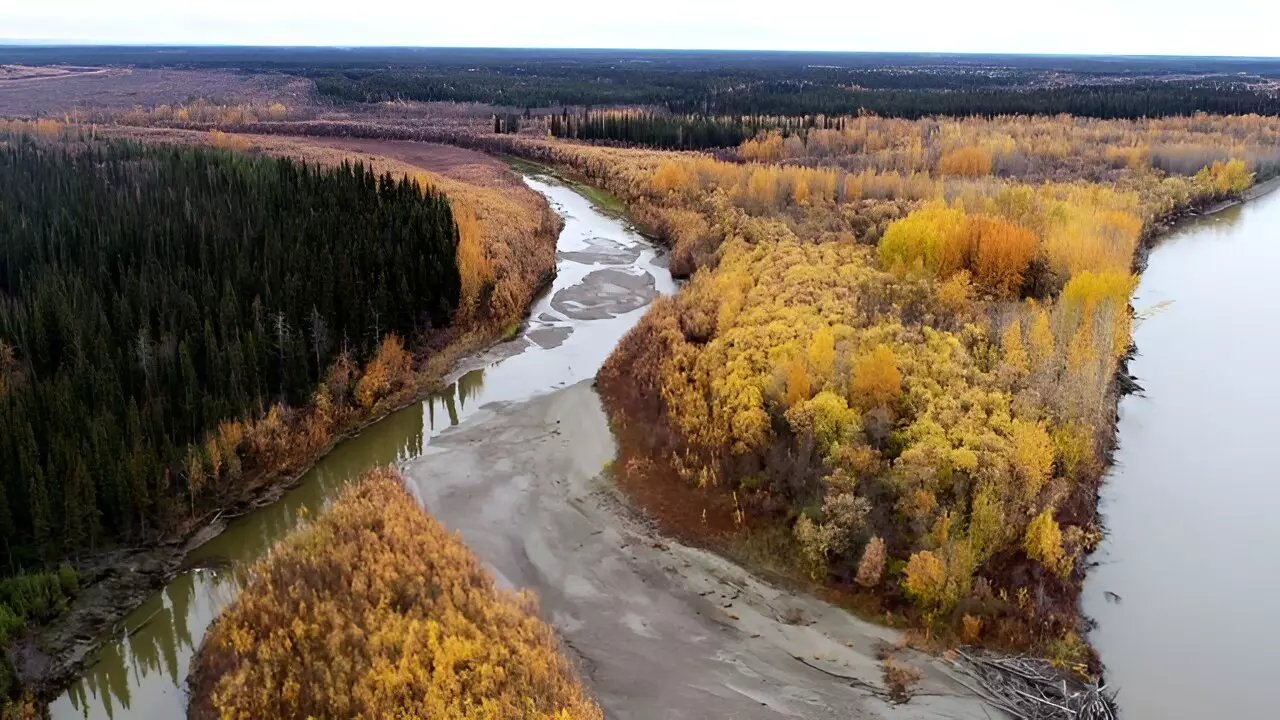The melting of permafrost due to climate change is a pressing global issue, particularly in the Arctic region. As the climate warms at a rate that can be up to four times faster than the global average, the implications of this phenomenon extend far beyond rising temperatures. One of the most alarming consequences of permafrost thawing is the release of mercury, a potent neurotoxin that has been trapped in the frozen ground for millennia. Recent research conducted by scientists from the USC Dornsife College of Letters, Arts and Sciences sheds light on this growing environmental threat. By providing a more precise methodology for measuring mercury release in the Yukon River Basin, the study underscores the urgent need to understand the ramifications of mercury pollution in Arctic communities.
Mercury is introduced into the Arctic ecosystem via atmospheric circulation, which transports pollutants to higher latitudes where they accumulate due to specific chemical behaviors. Over thousands of years, this metal has built up in the form of mercury within the permafrost, also termed “frozen ground”, where it remains isolated from the ecosystem until warming trends initiate thawing. This cyclical pattern of absorption and freezing eventually leads to hazardous concentrations that pose significant risks when released into the environment. Understanding the dynamics of mercury movement from air to soil and then to waterways is crucial for developing strategies to mitigate its impact on both human health and the environment.
The recent study, published in Environmental Research Letters, brought together experts from various prestigious institutions, including Caltech and MIT, as well as local tribal councils. By shifting focus from traditional methods that primarily analyzed surface core samples of permafrost, the researchers explored deeper sediment layers along the riverbanks of the Yukon River. This innovative approach enabled them to obtain more reliable estimates of mercury concentrations, revealing that mercury levels in sediments were consistent with higher estimates gathered in previous studies. Such advancements in measurement techniques not only improve the accuracy of mercury assessments but also help researchers gauge the perils lurking beneath the surface of this vulnerable ecosystem.
One of the critical findings of the study is the relationship between river dynamics and mercury release. The Yukon River naturally changes its course over time, a phenomenon that facilitates the erosion of banks laden with mercury sediments while also redepositing some of that sediment in new locations. Herein lies a double-edged sword: while some mercury ends up in the aquatic environment, a considerable amount is buried in newly formed sandbars, complicating the assessment of potential mercury threats. Understanding this interplay is essential for developing a comprehensive understanding of mercury movement, and for predicting how much toxic metal may ultimately be liberated as permafrost continues to melt.
The implications of mercury exposure are particularly worrying for the approximately 5 million people living in the Arctic, many of whom rely on hunting and fishing as primary food sources. Mercury bioaccumulates in aquatic life, making fish and game a significant source of exposure for these communities. While the current risk of acute toxic exposure may be low, the latent threats posed by decades of accumulated mercury in the food chain cannot be dismissed. As concentrations increase with ongoing environmental changes, the cumulative effects on health and well-being are anticipated to be dire, particularly for vulnerable populations.
The complexities surrounding mercury movement in the Arctic indicate a form of ticking time bomb, with the potential to unleash widespread ecological and health-related problems. The research by USC Dornsife et al. not only highlights the importance of refining measurement techniques for mercury but also calls attention to the necessity of integrating these findings into broader environmental policies and community health strategies. Adequate measures must be taken to mitigate the lurking threat of mercury as permafrost continues to melt, ensuring that Arctic communities are equipped to navigate a future that is increasingly shaped by climate dynamics and their cascading impacts on health and the environment. Effective action is imperative to diffuse the mercury bomb that awaits in the Arctic, safeguarding both ecological integrity and human well-being for generations to come.


Leave a Reply